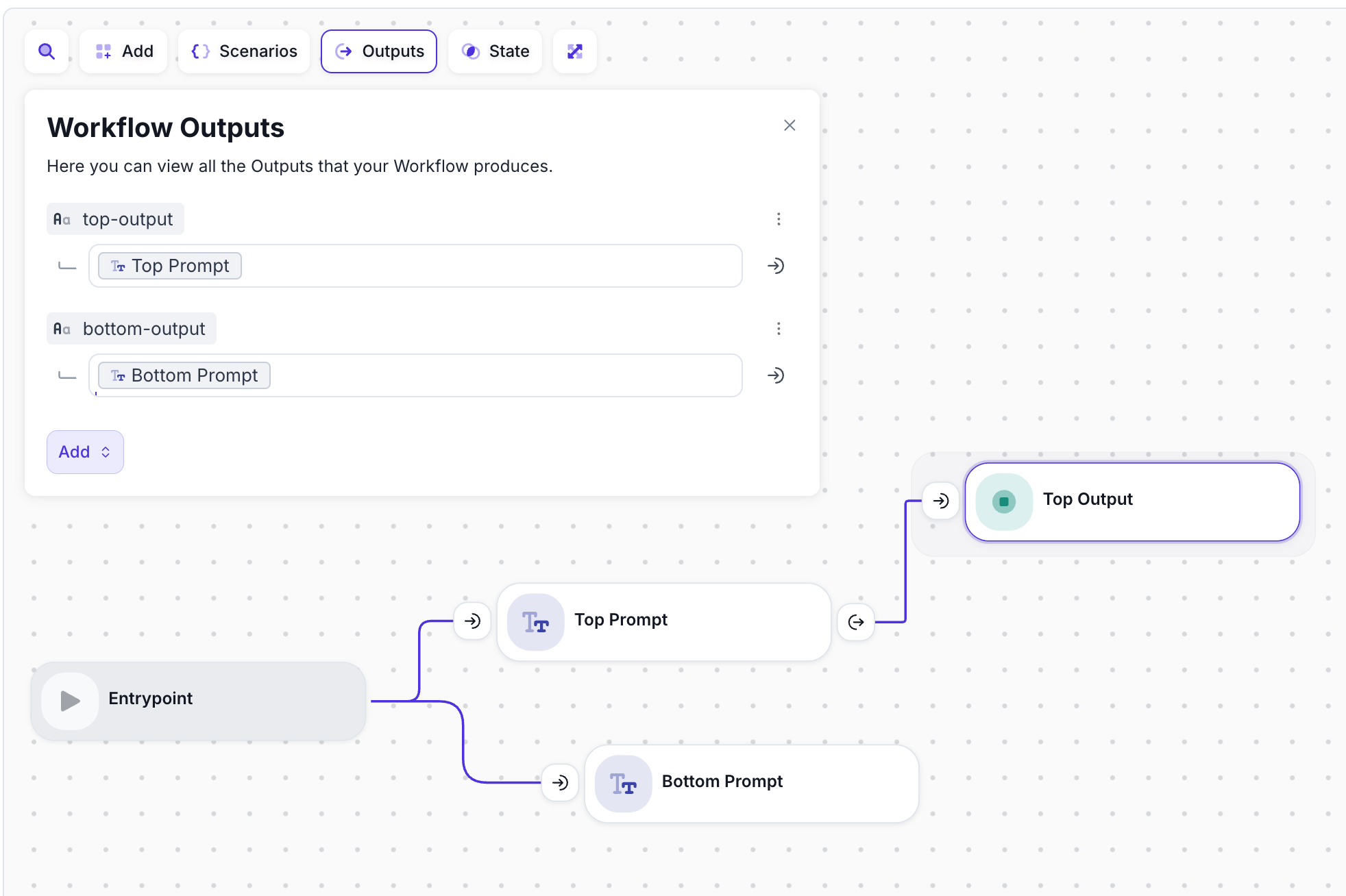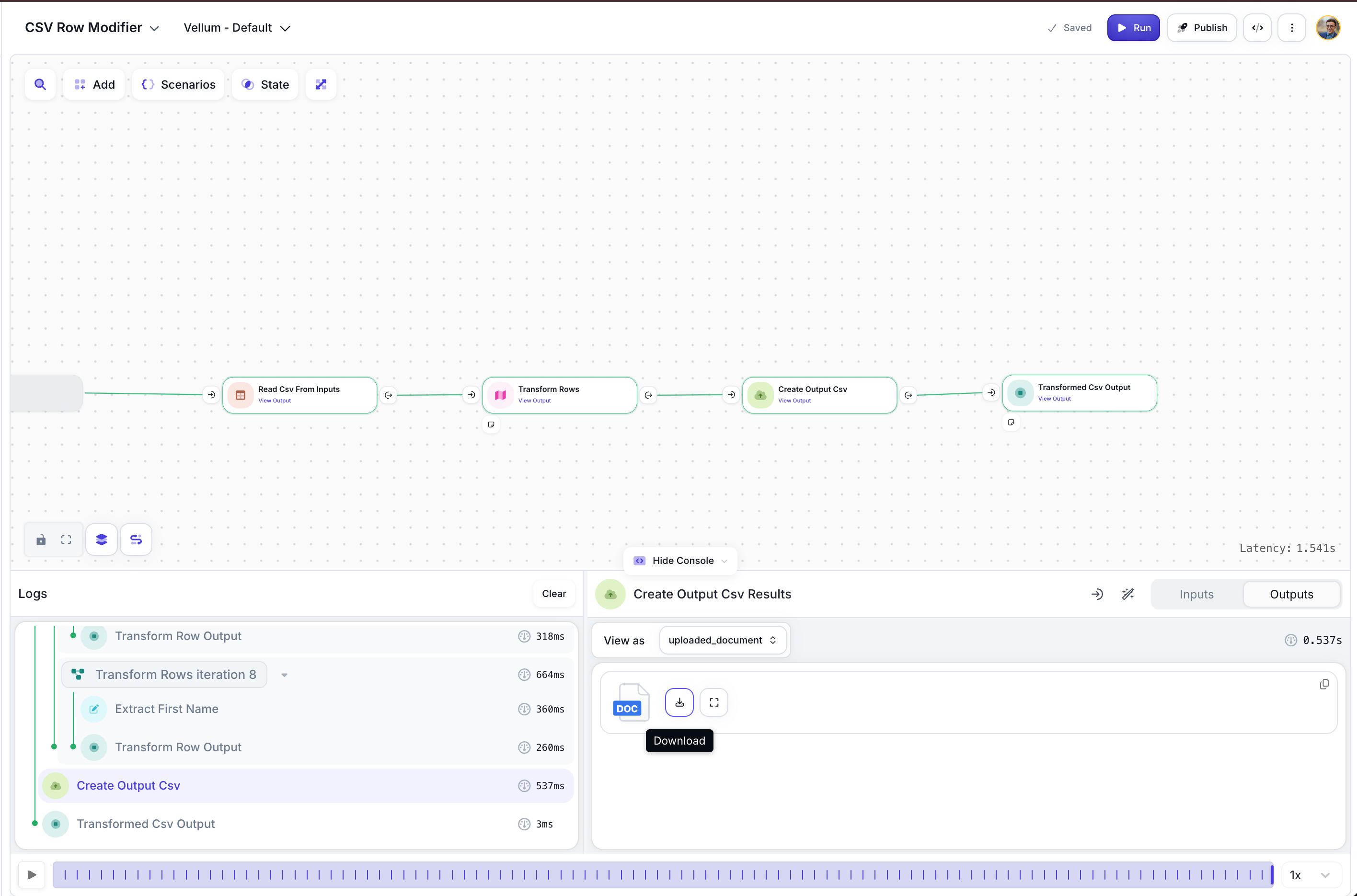December 2025
Gemini 3 Flash on Google Vertex AI
December 19th, 2025
We’ve added support for Google’s Gemini 3 Flash model on Google Vertex AI.
Gemini 3 Flash Model
December 18th, 2025
We’ve added support for Google’s Gemini 3 Flash model (gemini-3-flash-preview).
Mistral AI Model Provider
December 16th, 2025
Mistral AI is now available for use via our Model Providers. Models that are now available for use is:
- Mistral Large 3
- Mistral Medium 3.1
Full Screen Workflow Code Editor
December 15th, 2025
The Workflow Sandbox code editor now opens in full screen instead of a right-side fly-out. This gives you more room to view and edit your Workflow’s code.
Workflow Outputs Panel
December 15th, 2025
You can now define Workflow Outputs directly without needing to add a Final Output Node. Workflow Outputs can reference Node Outputs and State Values, and they resolve once at the end of your Workflow. If you have existing Final Output Nodes in your graph, they’ll stay in sync with their corresponding Workflow Outputs.

Workflow Deployment Release Comparison
December 15th, 2025
You can now compare two Workflow Deployment Releases to see what changed between them. Navigate to your Workflow’s Deployment, go to the Releases tab, and click the “Compare” button to open a modal showing a code diff between the two Releases.
Workflow Sandbox History Comparison
December 15th, 2025
You can now compare your Workflow Sandbox against previous versions. Open your Workflow’s history, navigate to any prior version, and click the “Compare” button to see a code diff in a modal.
GPT-5.2 Model
December 11th, 2025
We’ve added support for GPT-5.2 from OpenAI.
Voice Input for Agent Builder
December 10th, 2025
You can now use your voice to interact with Agent Builder instead of typing. Click the microphone icon in the input field to speak your instructions, context, or questions. This makes it much easier to braindump and share thorough context quickly about your use-case, anticipated edge cases, and more. Agent Builder will carefully make sense of the raw, unstructured details that you provide while it plans and executes its next moves.

Workflow Layout Dropdown
December 10th, 2025
We’ve added a Workflow Layout Dropdown that consolidates navigation and global options. Sandbox, Evaluations, and Deployments now live in the dropdown, along with Edit Sandbox Details, Clone, Archive Sandbox, and the Environment picker. This gives you more space on the canvas while keeping all controls within reach.

CSV Files as Workflow Inputs
December 10th, 2025
You can now include CSV files as Workflow Inputs. Previously, you had to include them as attachments within Chat History messages or fetch them from external datasources.
When you ask Agent Builder to build a Workflow with CSV inputs, it creates the Nodes you need to process your CSV—row by row, in batches, or passing the entire file to LLMs with CSV processing capabilities. CSV files can also be Workflow outputs.

Chat History Operation in Set State Node
December 8th, 2025
When configuring state operations for a chat_history state variable in the Set State Node, you can now use the Set or Append operation with a specified role (User or Assistant) to initialize or update chat history in your Workflows.

Revamped Workflow Deployment Overview Page
December 4th, 2025
We’ve redesigned the Workflow Deployment Overview page. The new layout shows your options for running published Workflows: run it in an AI App, create a custom UI with the Lovable Integration, integrate via our APIs using code snippets, or use Workflow Triggers for scheduled execution.
